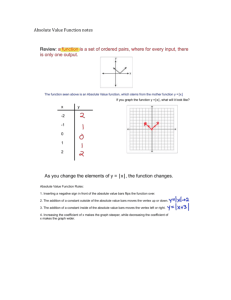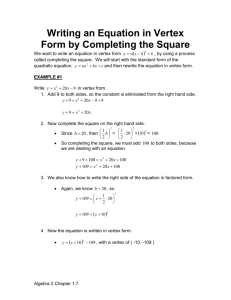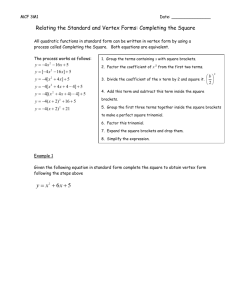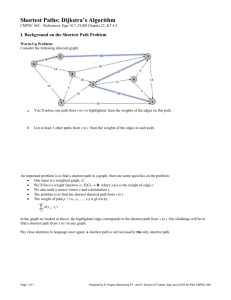Proof that Greedy Scheduling Algorithm Works
advertisement
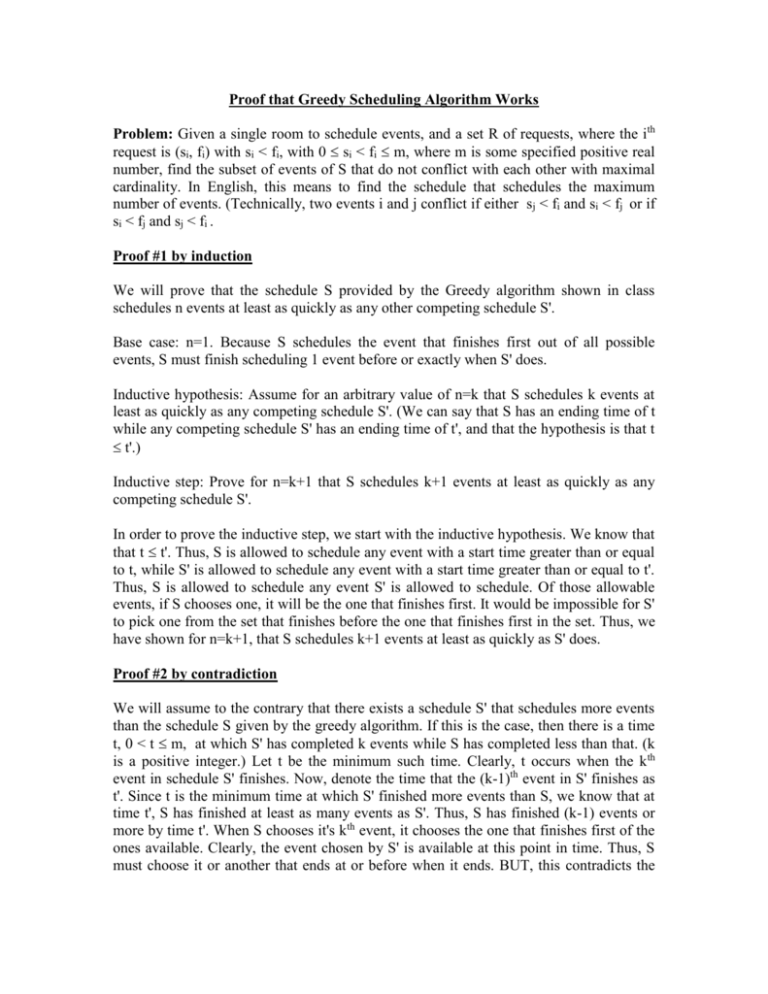
Proof that Greedy Scheduling Algorithm Works
Problem: Given a single room to schedule events, and a set R of requests, where the ith
request is (si, fi) with si < fi, with 0 si < fi m, where m is some specified positive real
number, find the subset of events of S that do not conflict with each other with maximal
cardinality. In English, this means to find the schedule that schedules the maximum
number of events. (Technically, two events i and j conflict if either sj < fi and si < fj or if
si < fj and sj < fi .
Proof #1 by induction
We will prove that the schedule S provided by the Greedy algorithm shown in class
schedules n events at least as quickly as any other competing schedule S'.
Base case: n=1. Because S schedules the event that finishes first out of all possible
events, S must finish scheduling 1 event before or exactly when S' does.
Inductive hypothesis: Assume for an arbitrary value of n=k that S schedules k events at
least as quickly as any competing schedule S'. (We can say that S has an ending time of t
while any competing schedule S' has an ending time of t', and that the hypothesis is that t
t'.)
Inductive step: Prove for n=k+1 that S schedules k+1 events at least as quickly as any
competing schedule S'.
In order to prove the inductive step, we start with the inductive hypothesis. We know that
that t t'. Thus, S is allowed to schedule any event with a start time greater than or equal
to t, while S' is allowed to schedule any event with a start time greater than or equal to t'.
Thus, S is allowed to schedule any event S' is allowed to schedule. Of those allowable
events, if S chooses one, it will be the one that finishes first. It would be impossible for S'
to pick one from the set that finishes before the one that finishes first in the set. Thus, we
have shown for n=k+1, that S schedules k+1 events at least as quickly as S' does.
Proof #2 by contradiction
We will assume to the contrary that there exists a schedule S' that schedules more events
than the schedule S given by the greedy algorithm. If this is the case, then there is a time
t, 0 < t m, at which S' has completed k events while S has completed less than that. (k
is a positive integer.) Let t be the minimum such time. Clearly, t occurs when the k th
event in schedule S' finishes. Now, denote the time that the (k-1)th event in S' finishes as
t'. Since t is the minimum time at which S' finished more events than S, we know that at
time t', S has finished at least as many events as S'. Thus, S has finished (k-1) events or
more by time t'. When S chooses it's kth event, it chooses the one that finishes first of the
ones available. Clearly, the event chosen by S' is available at this point in time. Thus, S
must choose it or another that ends at or before when it ends. BUT, this contradicts the
fact that S' has finished more events than S at time t. Thus our assumption, that there was
a point in time where S' has finished more events than S is false. Thus, S is optimal.
Proof of Dijkstra's Algorithm
We will use proof by contradiction here as well. We will assume the algorithm does not
work. If it does not work, then there is a vertex u, when added to S, that does not have an
accurate minimal distance estimate d[u]. Since the source vertex gets added in to S at the
beginning and its estimate is accurate, we know that u s. Consider the point in time
when u gets added to S. Right before this point in time, let S = {v1, v2, ... vk} and uV-S.
We know that for 1 i k, d[vi] = minDistance(s, vi) at this point in time. BUT, when u
gets added to S, we have d[u] > midDistance(s, u). If this is the case, then there must be
some path from s to u with a smaller distance than the one determined by Dijkstra's
algorithm. This path must contain some vertex not in S. Let the path determined by
Dijkstra's travel from s to u through edge (vj, u). By the construction of the algorithm, this
is the only edge in the path with a vertex not in S. Now, if there is another shorter path, it
must go through at least one more vertex not in S. (If it were another path with all
vertices except for u inside of S, Dijkstra's would have picked that instead.) Thus, our
shortest path goes from s through some vertex vm , where vm V - S, to u, either directly
or indirectly. The problem with this is that this path can't be shorter than the one
determined by Dijkstra's. Since vm V - S, d[vm] d[u], based on how Dijkstra's works.
Furthermore, since there are no negative edge weights in the graph, the weight of the path
from vm to u must be non-negative. Thus, this path that is claimed to be shorter than d[u],
can not be. Mathematically, we have:
minDistance(s, u) = d[vm] + minDistance(vm, u)
d[u] + minDistance(vm, u)
d[u],
contradicting the assumption that midDistance(s,u) < d[u]. Thus, the assumption of the
existance of a vertex u is in error, and Dijkstra's does work properly.




